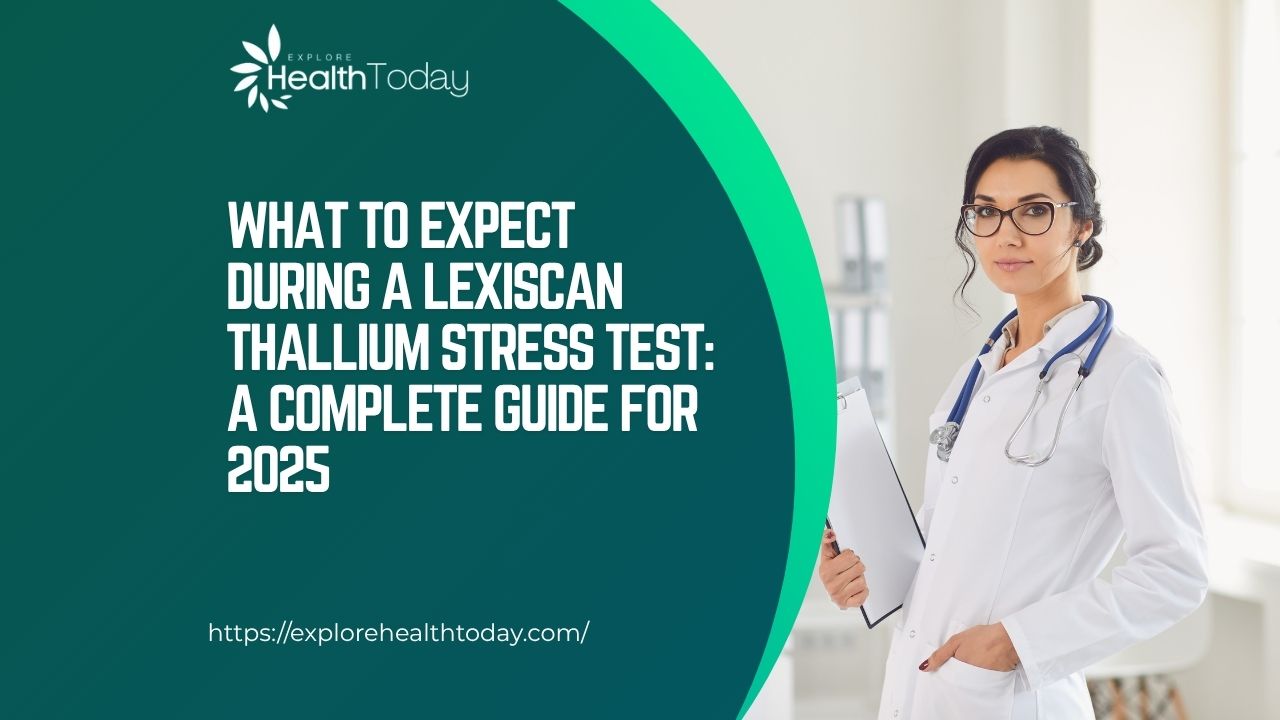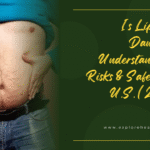Heart disease remains the leading cause of death in the United States, and early detection plays a critical role in prevention and treatment. One important diagnostic tool doctors often recommend is the Lexiscan thallium stress test—a nuclear imaging procedure that helps assess how well blood is flowing to your heart. If your doctor has ordered this test, you may have questions about what it is, why it’s used, and what to expect. This comprehensive guide will walk you through everything you need to know about the Lexiscan thallium stress test in 2025.
What Is a Lexiscan Thallium Stress Test?
A Lexiscan thallium stress test is a type of nuclear stress test used to evaluate blood flow to the heart muscle. It’s typically ordered when exercise stress testing isn’t possible due to physical limitations. This test combines a radioactive tracer (thallium or technetium) with a medication called Lexiscan (regadenoson), which simulates the effects of exercise by dilating blood vessels in the heart.
Why It’s Ordered
Doctors may recommend this test if you have:
- Symptoms like chest pain or shortness of breath
- A history of coronary artery disease
- Risk factors such as diabetes, high blood pressure, or high cholesterol
- Inconclusive results from other tests like an EKG or echocardiogram
How the Test Works
The Lexiscan thallium stress test is performed in a medical facility and typically takes around 2–3 hours. Here’s a step-by-step overview:
Step 1: Preparation
You’ll be asked to:
- Avoid caffeine and certain medications for 24 hours before the test
- Fast for at least 4–6 hours
- Wear comfortable clothing and shoes
- Inform the technician of any allergies or current medications
Step 2: Resting Imaging
An IV will be inserted into your arm to administer the radioactive tracer. You’ll lie under a gamma camera while it takes images of your heart at rest.
Step 3: Lexiscan Injection
Lexiscan is injected through the IV to increase blood flow to the heart. You may experience side effects such as:
- Shortness of breath
- Flushing
- Chest discomfort
- Headache or dizziness
These side effects are typically mild and short-lived.
Step 4: Stress Imaging
A second dose of tracer is injected after the Lexiscan takes effect. More images are taken to compare with the resting ones.
Understanding the Results
The cardiologist will analyze the images to look for areas of the heart that aren’t receiving enough blood. This can indicate:
- Coronary artery disease (CAD)
- Past heart attacks (scar tissue)
- Reduced heart function
Results typically fall into three categories:
- Normal: Good blood flow during both rest and stress
- Abnormal: Reduced blood flow suggests possible blockages
- Inconclusive: May require further testing like a cardiac catheterization
Is the Lexiscan Thallium Stress Test Safe?
Yes, the test is generally safe and well-tolerated. While it uses a small amount of radioactive material, the risk of side effects is minimal. According to the U.S. Food and Drug Administration (FDA), the radiation dose is comparable to a few chest X-rays.
However, certain individuals—like those with asthma, low blood pressure, or advanced kidney disease—should discuss risks with their doctor in advance.
For more information on nuclear imaging safety, you can visit the RadiologyInfo.org website, a trusted source developed by the American College of Radiology.
2025 Trends and Advancements
In 2025, several new trends are shaping how Lexiscan thallium stress tests are performed:
- AI-enhanced imaging: Hospitals are increasingly using AI tools to analyze nuclear images more accurately and efficiently.
- Shorter test times: New protocols are reducing total testing time without sacrificing accuracy.
- Greater accessibility: Thanks to improved insurance coverage under updated Affordable Care Act (ACA) guidelines, more Americans are eligible for stress testing if they meet clinical risk criteria.
According to the Centers for Disease Control and Prevention (CDC), approximately 18.2 million adults in the U.S. have coronary artery disease, underscoring the importance of effective screening methods like Lexiscan stress testing.
Cost and Insurance Coverage in the U.S. (2024–2025)
The average cost for a Lexiscan thallium stress test ranges from $1,500 to $5,000 depending on the location and facility. Costs may include:
- Physician fees
- Imaging services
- Facility charges
- Radiotracer materials
Most major insurance plans, including Medicare and Medicaid, cover the test when deemed medically necessary. Check with your insurance provider beforehand to confirm your coverage and any out-of-pocket costs.
You can refer to Medicare.gov for up-to-date cost estimates and coverage information: Medicare Stress Test Coverage.
Preparing for the Test: Quick Checklist
Here’s a simple checklist to help you prepare for your Lexiscan thallium stress test:
- Avoid caffeine (coffee, tea, chocolate, soda) for 24 hours
- Don’t eat or drink for 4–6 hours before the test
- Wear loose, comfortable clothes
- Bring a list of medications and allergies
- Arrange for someone to drive you home if needed
- Discuss any health concerns with your doctor ahead of time
Frequently Asked Questions
Is the Lexiscan thallium stress test painful?
No. The test is generally painless, though you may experience brief discomfort from the IV and mild side effects from Lexiscan.
Can I go back to work after the test?
Most people can resume normal activities within a few hours. However, you should follow any post-test instructions provided by your healthcare team.
How long will it take to get the results?
Results are typically available within 24–48 hours and are shared by your cardiologist or referring physician.
Final Thoughts
A Lexiscan thallium stress test is a powerful tool in identifying and managing heart disease. If you’re unable to exercise due to physical limitations or other conditions, this test offers a safe, effective alternative to traditional stress testing.
As diagnostic imaging continues to improve in 2025, patients have more access than ever to high-quality, early heart disease detection. If your doctor recommends this test, don’t be alarmed—it’s a proactive step toward better heart health.
If you’re experiencing symptoms or have risk factors for heart disease, talk to your doctor about whether a Lexiscan thallium stress test is right for you. Early detection can save lives—schedule your consultation and get the answers your heart needs.
About ExploreHealthToday.com
ExploreHealthToday.com was created to be a one-stop resource where readers can find up-to-date, well-researched articles on a variety of health topics. From nutrition and wellness to lifestyle and mental health, we strive to provide reliable information to help you make informed decisions about your well-being.
We believe that good health starts with good information, and our mission is to empower our readers with knowledge they can trust.
Visit us at ExploreHealthToday.com to learn more.





